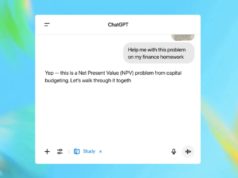From January 2015 to June 2016, students across 12 states completed 56 tasks that measured their ability to judge the credibility of online information. Researchers analyzed 7,804 responses from students located in a variety of schools, including in lower-resourced classrooms in Los Angeles and wealthier suburbs outside Minneapolis.
“We were shocked, to be honest, by how consistently poor these students did,” said Joel Breakstone, director of the Stanford History Education Group. “Across the board, students really struggled. They read for content, and rarely do students consider, ‘Where does this content come from?'”
The new findings come as tech firms, including Facebook, Twitter and Alphabet’s Google, are contending with how to stop the spread of misinformation while balancing free speech. In the wake of Donald Trump’s stunning presidential victory, some are blaming Facebook for not doing enough to combat fake news.
Over the weekend, Facebook CEO and co-founder Mark Zuckerberg said the company was looking at different ways to combat the spread of misinformation, such as showing warnings on stories flagged as fake or making it easier for people to report these posts.
But with snippets of new information constantly flooding social media sites and smartphones daily, experts say, educators and parents also will have to play a role in helping students separate fact from fiction.
“The No. 1 skill that kids are going to need in this 21st century is media literacy and the power of discernment,” said Stephen Balkam, founder and CEO of the Family Online Safety Institute. “What is real and what is not real? What is reputable and what is not reputable? And the willingness to go deep and not just read a headline.”
For students, it’s apparently an uphill learning battle. They’re often taught in schools how to comprehend a written passage but less frequently how to judge the source of the information presented before them, Breakstone said. And because technology evolves quickly, the teaching materials about news literacy haven’t kept up.
In one assessment, 225 high school students were shown two Facebook posts about Trump announcing his candidacy for presidency and then were asked which was the most trustworthy source. One post was from Fox News and had a verified check mark next to the media outlet’s name. Another post was from “Fox News The FB Page” and included a screenshot of a tweet from Trump.
Only a quarter of the students recognized that one of the Facebook accounts was verified with a blue check mark. More than 30 percent thought the unverified Facebook page was a more trustworthy source because it included a tweet from Trump.
More than 80 percent of 203 middle school students shown the homepage of Slate’s website, thought “sponsored content” was a news story instead of an ad. And college students had trouble figuring out that MinimumWage.com is managed by lobbyists for the food and beverage industry.
The Federal Trade Commission in 2015 urged companies to be more clear about the language they use to disclose ads — especially when they resemble news articles, product reviews and other online content. “Paid Advertisement” and “Sponsored Advertising Content” are more likely to be understood than “Sponsored by” because consumers might think the content was funded by an advertiser but not created by that firm, the FTC said in a guide to businesses.
“With the proliferation of organizations that seek to obscure who they are on the web and groups and individuals try to put forth information that’s simply false, it’s crucial for students to understand what makes a particular piece of information reputable,” Breakstone said. “There’s relative strengths of different pieces of evidence.”
© 2016 San Jose Mercury News
syndicated under contract with NewsEdge. -.







